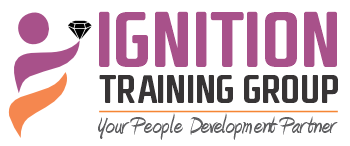Coaching is an essential tool in the leadership toolkit. As a leader, you have to take the time to build the kind of relationship with your team members that enables you to provide them with coaching on a regular basis. Successful coaching between a manager and a team member is enhanced by a strong relationship.
Coaching can be used to address an actual performance issue and it can also be used to help an employee grow and improve in areas that are important to them. Simply stated, coaching is empowering people to grow and improve their skill set. Irrespective of what your motivation or reason for pulling out your coaching tool, there are some steps that you can take to be an effective coach.
Before you engage yourself in a coaching session, it is advisable that you take the time to identify the key highlights that you will discuss with the team member. This will help you stay focused, cover key topics of discussion, and be more confident and relaxed in the process.
The initial step in a coaching session involves describing the performance issue to your team member(s) and then accord them an opportunity to share their perspective on the same. Pay attention to what they have to say. Use open-ended questions to clarify and enhance your understanding of the team member’s perspective.
The next step is to discuss the impact of the issue or opportunity on the team member and others. Let’s say for instance that you are coaching a team member who has been reporting to work late and they have offered to work some extra hours to compensate for their lateness. However, they may be blind to the impact this have on the other team members that may have had to pick up their tasks before they arrive. In such a scenario, you would have to give specific examples of how their behaviour impacts others.
The third step in the coaching process is to clarify the expectations you have of the employee. Making the team member to clearly understand what performance is expected of him/her. It’s also very important that the team member understand the consequences (if the coaching is to address a negative issue) and the benefits (if the coaching is to elevate satisfactory performance) of their actions or inactions.
The next step is to engage the team member in action planning and obtaining commitment to that action plan: Engaging the team member in brainstorming ideas on the potential steps they could take to turn the situation around. Upon detailing a good list of options, ask them what steps they will take and be sure to follow up with the team member.
Lastly, document the conversation: Seeing the conversation in writing not only elevates the sense of seriousness but may be needed should the team member choose not to meet the expectations and you realize some level of discipline or termination is appropriate. While none of us likes to initiate these consequences, being an effective leader means doing the difficult things too.
There are great potential benefits for your team members and the organization as well when you provide coaching. That includes but not limited to the following:
•Demonstrating your organizational commitment to human resource development
•Empowering individuals and encouraging them to take responsibility
•Increasing employee and staff engagement
•Improving individual performance
•Helping identify and develop high potential employees
•Helping identify both organizational and individual strengths and development opportunities
•Motivating and empowering individuals to excel
Employee Coaching has been a key focus for business leaders and we have a 4 HOURS ONLINE COURSE on COACHING FOR PERFORMANCE IMPROVEMENT that will give you the much needed insight on the coaching process and guide you-step by step, on how to have an effective performance-oriented conversations. For details on registration, please contact Ignition Training Group at +254773413419 or email Kigwa Stephen at skigwa@mskigwa.com

